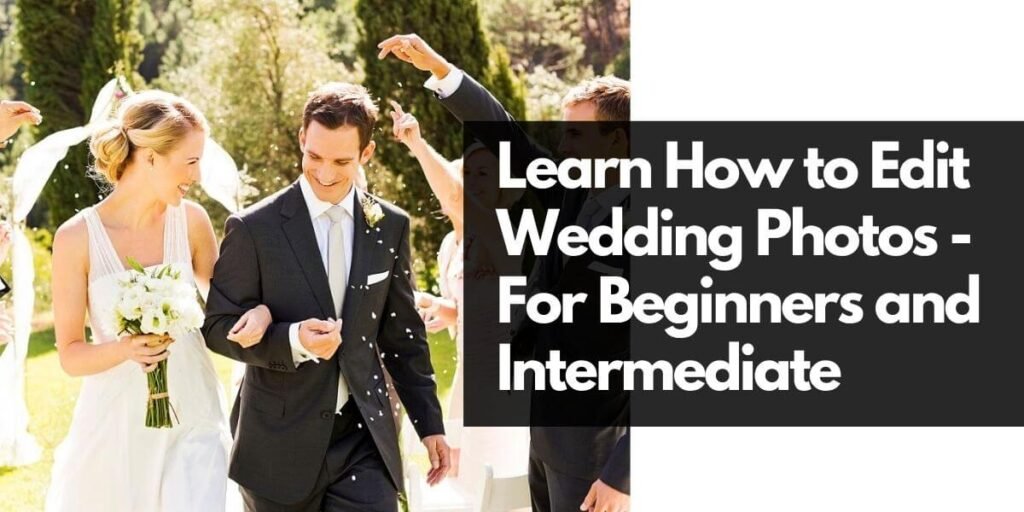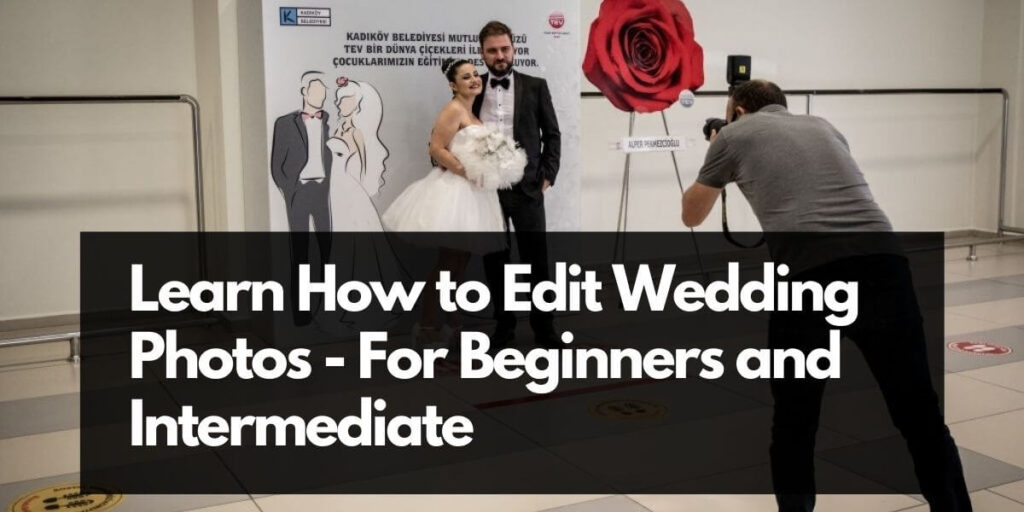Wedding ceremonies are amongst the toughest challenges a photographer can take upon themselves. And there are numerous reasons for it. A lot goes into taking wedding photos.
Photographers need to understand the venue, plan, and prepare when and where various parts of the event will take place. And also, how to deal with people at the ceremony and how the lighting will be. Often due to uneven lights and people errors, photos don’t come out as desired. Wedding photography edit becomes a necessity for those scenarios. Even if everything works out fine, there’s always room for improvement. Changing even a simple brightness slider can do wonders.
At Fix the Retouch, we have edited thousands of wedding photos and want to share our experience of editing. This article should be helpful for any photographer willing to get started or advance their knowledge of wedding photo editing.
Most Important Part: Maintain Consistency
Doesn’t matter how good you are at editing, if the edits are not consistent, you will end up with some unhappy clients. They will either ask you to re-edit those photos or even if they accept it, forget about asking for good reviews and referrals.
Firstly, understand the theme of the wedding photos. It is common in wedding ceremonies for everyone to follow a specific dress code and style. The wedding event takes place in various locations. You might need to take photos both indoors and outdoors and often at night. Due to uneven ambient, the colors of photos taken on one time period may contrast with other photos taken at a later time.
The bridesmaid’s dress might be orange, but at night time, because of the lighting, that same color might look neon orange. Other small things such as the tie color changing from champagne to off-white. You will need to take care of such issues while editing. There might be hundreds of images or even thousands, depending on the size of the wedding. You will have multiple folders for different sub-events that takes place. For example, there might be a getting ready, bridesmaids, bridals, family photos folders, etc. Think about the color schemes and consistency while editing each.
If the client has selected the images you need to edit, then that’s great. But if you are to decide which ones to edit, then make sure to choose the ones that focus on the event and people more than other random stuff. Try to select photos that tell a story and go along with the interesting things that are happening in the event.
Exposure and Color
This is the first step in the editing process. In most images, if not all images, adjusting the brightness is a necessity. So, use the levels or the curves adjustment tools in Photoshop to adjust the brightness.
Just increasing the brightness might not be enough. You will also need to adjust the highlights, shadows, and mid-tones. The curves tool is the best one for that.
If there are some basic color casting issues such as the picture looking a bit warmer than usual, use the curves adjustment tools for that. You will be able to select specific colors of an image and make very precise changes to it. Other simpler tools are also available, but the curves tool gives tons of flexibility.

Adding Vibrancy and Color Accuracy
The next step is adjusting the colors. One important thing to keep in mind while working with colors is not to overdo it so much so that the colors get changed. Increasing the vibrancy slightly will help make the colors pop. If the image is too dull, then using the saturation slider, more color details can be easily recovered.
In some cases, you will need to alter the colors drastically to make specific changes. Such as, a part of the cloth might get wet during the shoot. High-end color editing techniques can be used to get them back to original colors. We have dealt with such issues, which is why we are including it.
Remove Unwanted Details
You can never guarantee to provide clients with the perfect wedding photoshoot. The more photos you take, the more problems you will find in photos that you will need to fix. We once had a client asking to remove a tiny street sign that was blurred behind the background. It was barely noticeable, but the client insisted to get it removed. So, things might not bother you, but can be an issue for your client.
By default, remove the things that are distracting. If the client asks for changes after reviewing, make those changes as well. Focus on people’s faces, especially the bride and the groom. Do proper retouching to remove the spots and other issues from their skin and dresses.
Contouring and Putting Focus
Contouring is basically just putting a focus on the subjects and making them stand out better. Using Photoshop’s dodge and burn tool as well and adjusting the highlights and shadows, you could add more depth to the image.
For portrait shots, you could bring out the details of the subject’s face. This technique is a bit advanced and is commonly required in fashion magazine photos. But still, you might find some clients requesting for such jobs. And it’s understandable. Photos do look great if proper contouring is done.
One important thing to keep in mind while contouring is that, don’t mess up the details. This is a common problem beginners face. Use professional methods such as frequency separation to perform this task.
Cropping and Straightening
This is the final step in the post-processing task. Not all photos will be straight. Photographers will get the chance to take photos while everyone is posing for the camera, as well as they need to take photos when everything is in motion and very busy. Many photos will come out slightly off-angled.
Professional editing tools such as Photoshop offer simple and effective tools to make photos as straight as possible. Also, don’t forget to crop the photos. You can crop photos to remove further unnecessary things and put the focus solely on the main subjects.
Tip: When cropping, uncheck the delete cropped pixels if you are using Photoshop. Instead of deleting pixels entirely, it will allow you to adjust the photo later when you need it.
FAQ
What software is best for editing wedding photos?
The most popular options are Adobe Lightroom for color correction and batch editing, Adobe Photoshop for details retouching and Capture One for high-end color grading. Lightroom is beginner-friendly while Photoshop allows for advanced edits.
How do I choose the best wedding photos to edit?
Start by sorting and rating your images in Lightroom or any photo management tool. Keep sharp, well-composed shots and remove duplicates or blurry ones. A structured folder system helps with easy access.
How can I fix exposure and white balance?
Use the Exposure slider to adjust brightness and the White Balance tool to correct skin tones. Adjust highlights and shadows to recover lost details ensuring a natural and well-balanced look.
How do I make colors look natural and vibrant?
Use the Hue, Saturation and Luminance adjustments to fine-tune skin tones, greens and blues. This helps balance colors while reducing unwanted distractions.
What the best way to retouch skin in wedding photos?
For minor fixes the Spot Healing Brush in Photoshop works well. For smooth skin without losing texture, try frequency separation. Avoid over-smoothing to keep the skin looking natural.
What is dodging and burning and why is it important?
Dodging and burning specific areas help create depth and dimension. This technique is great for shaping the face and highlighting important details in a wedding photo.
Should I use presets for wedding photo editing?
Yes, presets can help maintain a consistent look across all images. You can use wedding-themed Lightroom presets and customize them to match the lighting and mood of your photos.
How long does it take to edit wedding photos?
It depends on the number of photos and the level of editing required. A basic edit can take a few minutes per photo, while advanced retouching may take longer. Batch editing in Lightroom speeds up the process.
Conclusion
It is not just the skills that you need for editing wedding photos. You will also need to understand the client’s intention. You will need to pay attention to the consistency and the theme of the wedding to properly and accurately edit the photos. Select some random images from different parts of the wedding, edit these, and send the samples to the client. Get their feedback and start doing the final edits all together.

